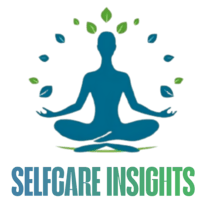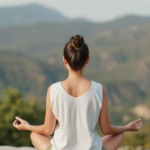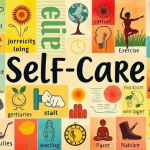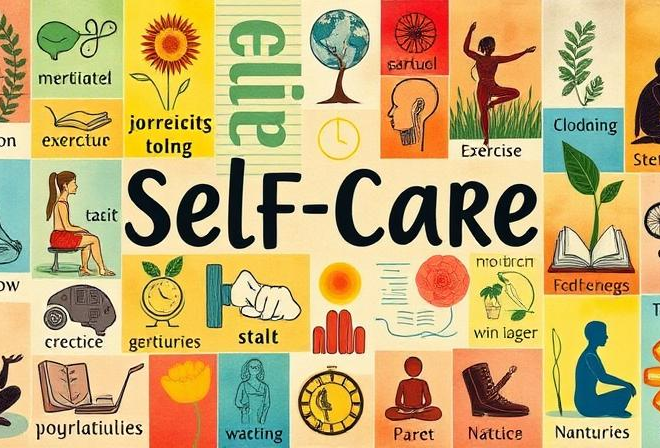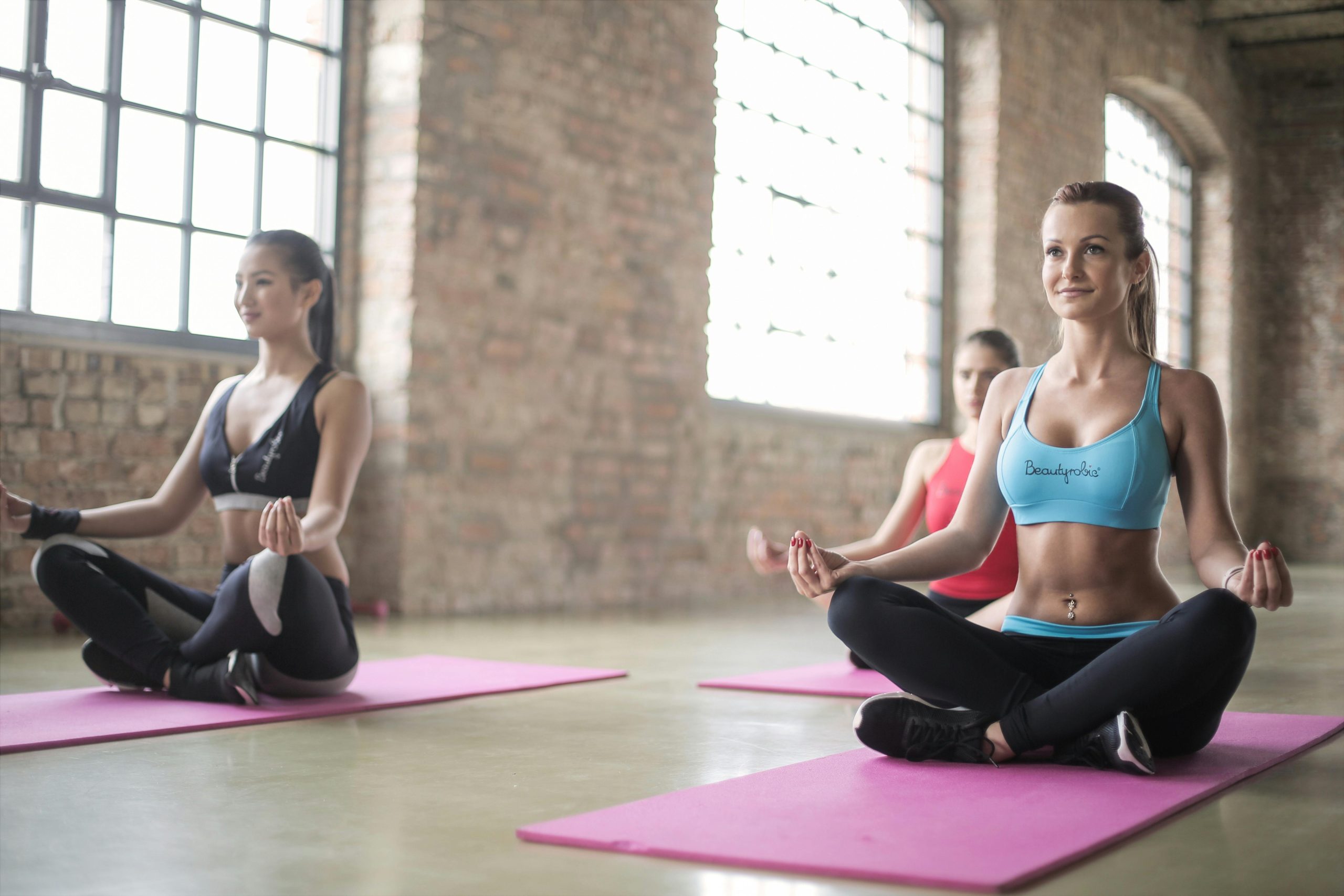
7 Yoga Poses That Instantly Relieve Stress and Tension
Benefits of Incorporating Yoga into Your Daily Routine
Incorporating yoga into your daily routine can bring a myriad of benefits to both your physical and mental well-being. The practice of yoga involves a combination of poses, breathing techniques, and meditation that work together to promote relaxation, reduce stress, and increase flexibility. By engaging in a regular yoga practice, you can develop a greater sense of awareness of your body and mind, leading to a more balanced and harmonious state.
Additionally, yoga has been shown to improve overall strength and endurance, boost concentration and focus, and enhance feelings of inner peace and contentment. The gentle stretching and strengthening that yoga offers can help alleviate muscle tension, improve posture, and increase overall energy levels. By committing to a consistent yoga practice, you are investing in your long-term health, well-being, and quality of life.
The Connection Between Yoga and Stress Relief
Yoga has long been recognized as a powerful tool for stress relief. The combination of physical postures, breathwork, and mindfulness practices in yoga can help reduce the body’s stress response and promote a sense of calm and relaxation. By focusing on the present moment and connecting with the breath through yoga, individuals can learn to let go of the worries and anxieties that often contribute to stress.
Research has shown that regular yoga practice can have a positive impact on mental and emotional well-being, making it an effective strategy for managing stress. The physical movement in yoga helps release tension held in the body, while the meditative aspects of the practice can quiet the mind and promote a sense of inner peace. Whether in a challenging pose or a restorative one, yoga offers a holistic approach to stress relief that can be beneficial for individuals seeking to cultivate a greater sense of balance and well-being in their lives.
Understanding the Impact of Stress on the Body
Stress is a natural response that triggers the body’s fight-or-flight mechanism, releasing hormones like cortisol and adrenaline. While this response is helpful in emergency situations, chronic stress can have profound negative effects on the body. Prolonged stress can weaken the immune system, making individuals more susceptible to illnesses and infections.
Moreover, stress can also impact various bodily functions, such as digestion, sleep patterns, and cardiovascular health. It can lead to digestive issues like irritable bowel syndrome, disrupt sleep by causing insomnia or frequent awakenings, and increase the risk of heart disease and hypertension. The body and mind are intricately connected, and the impact of stress on the body can manifest in a variety of physical symptoms, highlighting the importance of managing and reducing stress levels for overall well-being.
How Yoga Poses Can Help Alleviate Tension
Yoga poses have the potential to offer relief from tension that often builds up in the body due to everyday stresses and activities. Through mindful movement and deliberate stretching, yoga poses help release tightness in muscles, promoting a sense of physical relaxation. By incorporating gentle and deliberate movements, yoga poses can target specific areas of the body where tension tends to accumulate, such as the neck, shoulders, and lower back.
In addition to physical tension, yoga poses also address mental and emotional tension by encouraging practitioners to focus on their breath and be present in the moment. This combination of breath awareness and intentional movement can help calm the mind and reduce stress levels, creating a sense of overall well-being. By regularly practicing yoga poses that target tension in both the body and mind, individuals can cultivate a sense of balance and harmony within themselves, ultimately leading to a more relaxed and centered state of being.
• Yoga poses offer relief from tension in the body
• Mindful movement and deliberate stretching help release tightness in muscles
• Target specific areas where tension accumulates, such as neck, shoulders, and lower back
• Address mental and emotional tension by focusing on breath and being present
• Calm the mind and reduce stress levels through intentional movement
• Regular practice of yoga poses can cultivate balance and harmony within oneself
Breathing Techniques to Enhance Relaxation During Yoga
When practicing yoga, incorporating proper breathing techniques can greatly enhance relaxation and mindfulness. One of the most commonly used techniques is diaphragmatic breathing, also known as belly breathing. This technique involves inhaling deeply through the nose, allowing the belly to expand fully as the diaphragm descends, followed by a slow and controlled exhale through the nose, drawing the belly in towards the spine.
Additionally, alternate nostril breathing, or Nadi Shodhana, is a powerful technique that can help balance the mind and reduce stress. This technique involves using the thumb and ring finger to close off one nostril while inhaling and exhaling through the other, then switching nostrils for the next breath. By focusing on the breath and the sensation of air moving through each nostril, practitioners can achieve a sense of calm and clarity during their yoga practice.
Poses to Release Tension in the Neck and Shoulders
If you often find yourself experiencing tension in your neck and shoulders due to stress or poor posture, incorporating specific yoga poses into your daily routine can help alleviate discomfort and promote relaxation. One beneficial pose for releasing tension in the neck and shoulders is the Thread the Needle pose. To practice this pose, begin in a tabletop position on your hands and knees. From there, slide your right arm underneath your left arm, bringing your right shoulder and ear to the mat. Hold this stretch for a few deep breaths before switching sides to ensure both shoulders receive equal attention.
Another effective pose for releasing tension in the neck and shoulders is the Eagle Arms pose. To practice this pose, start by extending your arms straight in front of you at shoulder height. Cross your right arm over your left, bringing your palms to touch if possible. From here, lift your elbows slightly and allow your shoulder blades to draw down your back. Hold this pose for several breaths before switching the arm crossing to ensure both sides are balanced in their stretches. These poses can be incorporated into your yoga practice to help relieve tension and tightness in the neck and shoulders, allowing for increased mobility and a sense of ease in the upper body.
Stress-Relieving Poses for the Lower Back
When experiencing tension in the lower back, incorporating specific yoga poses into your practice can provide relief and promote relaxation. Poses like Child’s Pose, Cat-Cow, and Sphinx Pose can help stretch and strengthen the muscles in the lower back, reducing discomfort and promoting flexibility. These poses also help improve circulation to the area, aiding in the release of built-up tension and supporting overall spinal health.
Incorporating gentle twists like Supine Spinal Twist or Seated Spinal Twist can further alleviate tension in the lower back by increasing mobility and promoting the release of tight muscles. These poses help in improving flexibility and range of motion in the spine, while also providing a sense of relaxation and relief. Regular practice of these stress-relieving yoga poses for the lower back can not only soothe discomfort but also contribute to a healthier, more aligned posture.
Yoga Poses to Calm the Mind and Reduce Anxiety
Anxiety is a common experience that can significantly impact our mental and emotional well-being. The practice of yoga offers various poses that can help calm the mind and reduce feelings of anxiety. Poses such as Child’s Pose and Corpse Pose are effective in promoting relaxation and soothing the nervous system. With consistent practice, these poses can be powerful tools in managing anxiety and cultivating a sense of inner peace and tranquility.
In addition to physical poses, breathing techniques in yoga, such as deep belly breathing and alternate nostril breathing, can help regulate the nervous system and alleviate symptoms of anxiety. These techniques focus on the connection between breath and emotions, allowing for a greater sense of awareness and presence in the moment. By incorporating these practices into your yoga routine, you can create a sanctuary for the mind, reducing anxiety and promoting overall mental well-being.
Seated Poses for Relaxation and Stress Relief
Seated poses in yoga offer a wonderful opportunity to ground yourself and find peace in the midst of a busy day. One example is Sukhasana, also known as Easy Pose, where you sit cross-legged and focus on your breath to calm the mind and release tension in the body. Another seated pose, Paschimottanasana or Seated Forward Bend, can help stretch the spine and hamstrings, promoting relaxation and reducing stress.
Adding a gentle twist to your seated pose repertoire, Marichyasana or Sage Twist Pose, can aid in detoxifying the body and easing tightness in the back. Incorporating these seated poses regularly into your yoga practice can contribute to a greater sense of relaxation and stress relief, allowing you to cultivate a peaceful state of mind amidst the demands of daily life.
Standing Poses to Improve Balance and Stability
Standing poses in yoga are not only great for enhancing physical balance and stability but also for promoting mental focus and concentration. These poses require strength in the legs and core while encouraging alignment and proper posture. One popular standing pose that fosters balance is Tree Pose (Vrksasana), where you stand on one leg and bring the sole of the other foot to your inner thigh or calf, with hands in a prayer position at the heart center.
Another beneficial standing pose for balance and stability is Warrior III (Virabhadrasana III), which challenges stability and strengthens the legs, core, and back muscles. In this pose, you extend one leg back while reaching the arms forward, creating a straight line from the fingertips to the heel of the lifted leg. Engaging the core and finding a focal point to gaze at can help improve balance and concentration in this challenging yet rewarding pose.
Twisting Poses to Release Tension in the Spine
Twisting poses in yoga are highly effective for releasing tension in the spine and promoting spinal health. When we engage in twisting poses, we engage the muscles along the spine, helping to improve circulation and flexibility in the back. Twists also aid in relieving stiffness and discomfort by stretching and lengthening the spine, creating a sense of spaciousness and mobility in the entire back region.
Incorporating twisting poses like Seated Spinal Twist or Revolved Triangle Pose into your yoga practice can help to alleviate built-up tension in the spine, which is commonly caused by poor posture, prolonged sitting, or stress. These poses not only target the muscles along the spine but also stimulate the internal organs, aiding in detoxification and promoting overall well-being. By consistently practicing twisting poses, you can enhance your spinal mobility, reduce back pain, and create a sense of rejuvenation and ease in your body.
Poses to Stretch and Relax Tight Muscles
Start by incorporating the Child’s Pose into your routine to help stretch and relax tight muscles in the back, shoulders, and hips. This pose involves sitting back on your heels with your arms stretched out in front of you, allowing your forehead to rest on the mat. Focus on deep breathing and feeling the gentle stretch throughout your body as you hold the pose for several breaths.
Another beneficial pose for releasing tension in tight muscles is the Cat-Cow Pose. This dynamic flow between arching and rounding the back helps to loosen up the spine and improve flexibility in the entire back region. Start on your hands and knees, inhaling as you arch your back and lift your head towards the ceiling (Cow Pose), and exhaling as you round your back and tuck your chin towards your chest (Cat Pose). Repeat this movement several times to unwind and rejuvenate your muscles.
Restorative Poses for Deep Relaxation
Restorative poses are a vital part of any yoga practice, offering a deep sense of relaxation and rejuvenation to the body and mind. By holding these poses for an extended period of time, typically anywhere from 5 to 20 minutes, you can allow your nervous system to shift into a state of calm and ease. This extended duration in each posture helps to release tension and stress stored in the muscles, promoting a profound sense of relaxation throughout the entire body.
Examples of restorative poses include supported child’s pose, legs up the wall, and reclining bound angle pose. These poses are designed to support the body with props such as bolsters, blankets, and blocks, allowing for a comfortable and passive stretch. As you settle into these poses, focus on deep, mindful breathing to help quiet the chatter of the mind and fully surrender into the present moment. Restorative poses can be particularly beneficial for those dealing with chronic stress, insomnia, or fatigue, offering a peaceful sanctuary to unwind and restore balance.
Incorporating Meditation into Your Yoga Practice for Stress Relief
To enhance the stress-relieving benefits of your yoga practice, incorporating meditation can be a powerful tool. Meditation allows you to cultivate mindfulness, focus on the present moment, and quiet the mind. By integrating meditation into your yoga routine, you can deepen your practice, increase relaxation, and promote a sense of inner peace.
During meditation, you can sit comfortably, close your eyes, and bring your attention to your breath. By observing the natural flow of your breath, you can create a sense of calm and stillness within yourself. Combining meditation with yoga poses can enhance the mind-body connection, reduce stress levels, and promote overall well-being.
The Importance of Savasana for Relaxation and Stress Reduction
Savasana, also known as Corpse Pose, is often considered the most important part of a yoga practice, especially when it comes to relaxation and stress reduction. This final resting pose allows the body and mind to fully relax and integrate the benefits of the practice. By cultivating a state of deep rest in Savasana, practitioners can release tension from both the physical body and the mind, promoting a sense of calm and rejuvenation.
During Savasana, the body is given the opportunity to surrender to gravity, letting go of any residual stress or tension held within the muscles. This pose allows for a conscious relaxation of the body, promoting a sense of ease and flow of energy throughout the system. By incorporating Savasana into your yoga practice, you can cultivate a deep sense of relaxation that carries over into your daily life, helping to reduce stress and promote overall well-being.
Yoga Poses for Better Sleep and Insomnia Relief
If you struggle with getting a good night’s sleep or suffer from insomnia, incorporating specific yoga poses into your daily routine can help promote better sleep quality and relaxation. Practicing gentle, restorative yoga poses before bedtime can signal to your body that it’s time to unwind and prepare for rest. Poses such as Legs-Up-the-Wall (Viparita Karani), Child’s Pose (Balasana), and Corpse Pose (Savasana) are particularly beneficial for calming the mind and body, making it easier to fall asleep peacefully.
By focusing on deep breathing and gentle movements, yoga can help reduce stress and anxiety levels that often contribute to sleep disturbances. Poses that elongate the spine and release tension in the neck and shoulders, such as Cat-Cow Pose (Marjaryasana-Bitilasana) and Thread the Needle Pose (Parsva Balasana), can ease physical discomfort that may disrupt sleep. Incorporating these soothing yoga poses into your bedtime routine can create a sense of tranquility and promote a restful night’s sleep.
Yoga Sequences for Stress Relief and Tension Release
Yoga sequences designed to alleviate stress and release tension can be invaluable tools in promoting overall well-being. By incorporating a combination of gentle stretches, breathing techniques, and mindfulness practices, these sequences aim to create a sense of calm and relaxation in the body and mind. Moving through a series of intentional poses can help to release physical tightness while also soothing the nervous system, allowing for a greater sense of ease and tranquility.
As you flow through these stress-relieving yoga sequences, focus on connecting with your breath and moving mindfully through each pose. Pay attention to how your body feels in each posture, and adjust as needed to find a comfortable stretch without pushing past your limits. By cultivating awareness and presence in your practice, you can enhance the benefits of these sequences and create a space for deep relaxation and tension release.
Tips for Maintaining a Consistent Yoga Practice for Stress Management
Establishing a regular yoga practice for stress management requires dedication and commitment. Setting aside a specific time each day to practice yoga can help create a routine that becomes a natural part of your day. Whether it’s early morning to start the day with a clear mind or in the evening to wind down and release tension, finding a consistent practice time that works for you is key. Additionally, creating a dedicated space for yoga in your home can help make it easier to practice regularly. Having a comfortable and inviting space where you can roll out your mat and focus on your practice can enhance your overall experience and motivation to continue.
Incorporating variety into your yoga practice can also help maintain consistency and prevent boredom. Mixing up your routine by trying different styles of yoga, exploring new poses, or following different sequences can keep your practice fresh and engaging. This can not only help prevent plateaus in your progress but also keep you excited to come back to your mat each day. Remember that consistency is more important than intensity, so listen to your body and adjust your practice as needed to ensure it remains sustainable in the long run.
Resources for Further Exploring Yoga and Stress Relief
For those looking to delve deeper into the benefits of yoga for stress relief, there are a plethora of resources available to expand your knowledge and practice. Online platforms such as Yoga Journal and Gaia offer a wide array of articles, videos, and online classes specifically tailored to incorporating yoga into your stress management routine. These resources provide valuable insights, tips, and guidance on how to effectively leverage yoga for combating stress and promoting overall well-being.
Additionally, local yoga studios and wellness centers often host workshops and retreats focused on stress relief through yoga. Attending these events can offer a more immersive experience, allowing you to connect with like-minded individuals and deepen your understanding of yoga as a tool for stress management. By exploring these resources and taking advantage of the expertise and guidance available, you can enhance your yoga practice and cultivate a greater sense of relaxation and peace in your daily life.
How to Modify Yoga Poses for Your Individual Needs and Abilities
When practicing yoga, it is essential to listen to your body and make modifications as needed to suit your individual needs and abilities. If a pose feels uncomfortable or causes pain, don’t force yourself to stay in it. Instead, try adjusting your alignment, using props such as blocks or bolsters, or choosing a variation of the pose that feels more accessible to you.
Remember that yoga is a personal journey, and there is no one-size-fits-all approach. Honor your body’s limitations and be gentle with yourself as you explore different poses and modifications. By customizing your practice to align with your unique requirements, you can experience the full benefits of yoga while avoiding potential injuries or strain.
